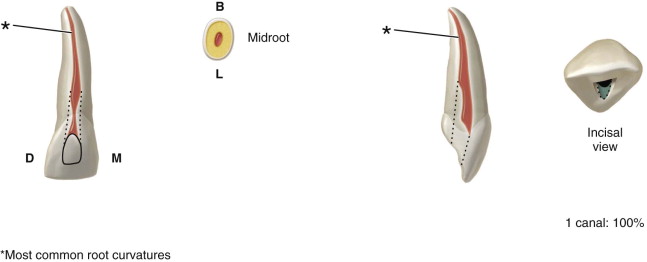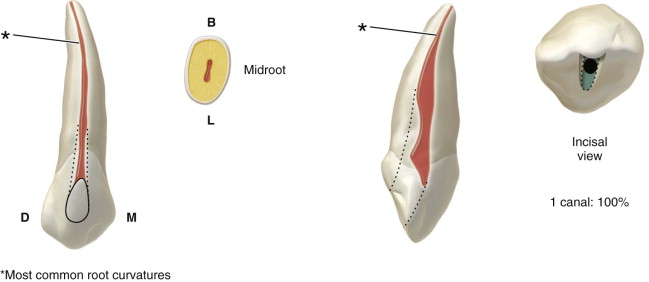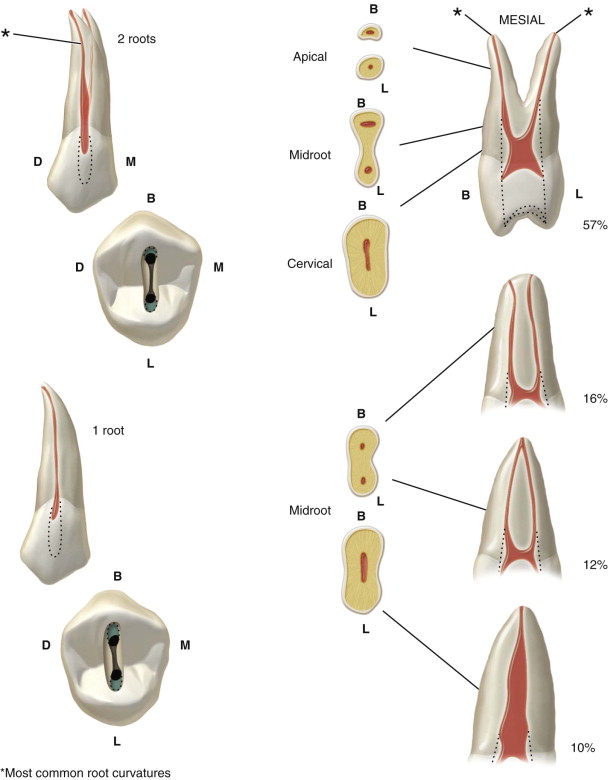The illustrations in this appendix depict the size, shape, and location of the pulp space within each tooth and also the more common morphologic variations. Based on this knowledge of the shape of the pulp and its spatial relationship to the crown and root, the correct outline form for access preparation is presented from the occlusal, lingual, and proximal views. From these illustrations, the following features can be observed:
- 1.
The location of access on posterior teeth relative to occlusal landmarks such as marginal ridges and cusp tips
- 2.
The size and appearance of the access on anterior teeth as viewed from the incisal surface
- 3.
The approximate size of the access opening
- 4.
The location of canal orifices and their positions relative to occlusal landmarks and to each other
- 5.
The canal curvatures and the location of the apical foramina
- 6.
The configuration of the chamber and cervical portion of the canals after straight-line access preparation
- 7.
The root curvatures that are most common
Each illustration gives the following information:
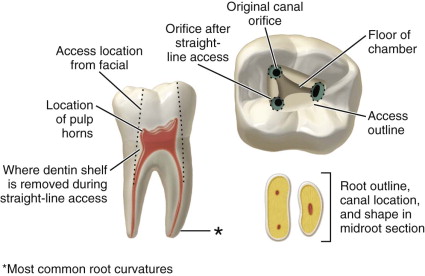
In addition, the percentages of the more common morphologic variations of the roots and canals are given. With many of the tooth groups, the percentages do not total 100%. The remaining percentage represents the less common variations not illustrated. Percentages are approximate to give general information, primarily to demonstrate relative occurrences. The more common root and canal curvatures are included. These are curvatures not readily identified on radiographs (i.e., toward the facial and lingual aspects).
Maxillary Right Central Incisor
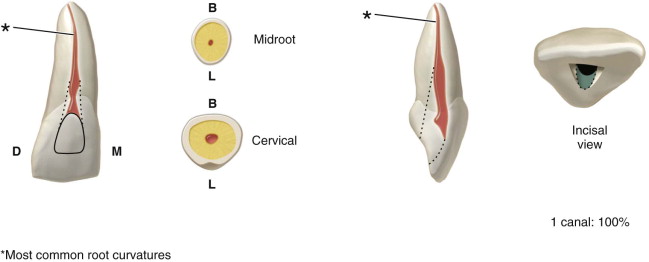
Stay updated, free dental videos. Join our Telegram channel

VIDEdental - Online dental courses


